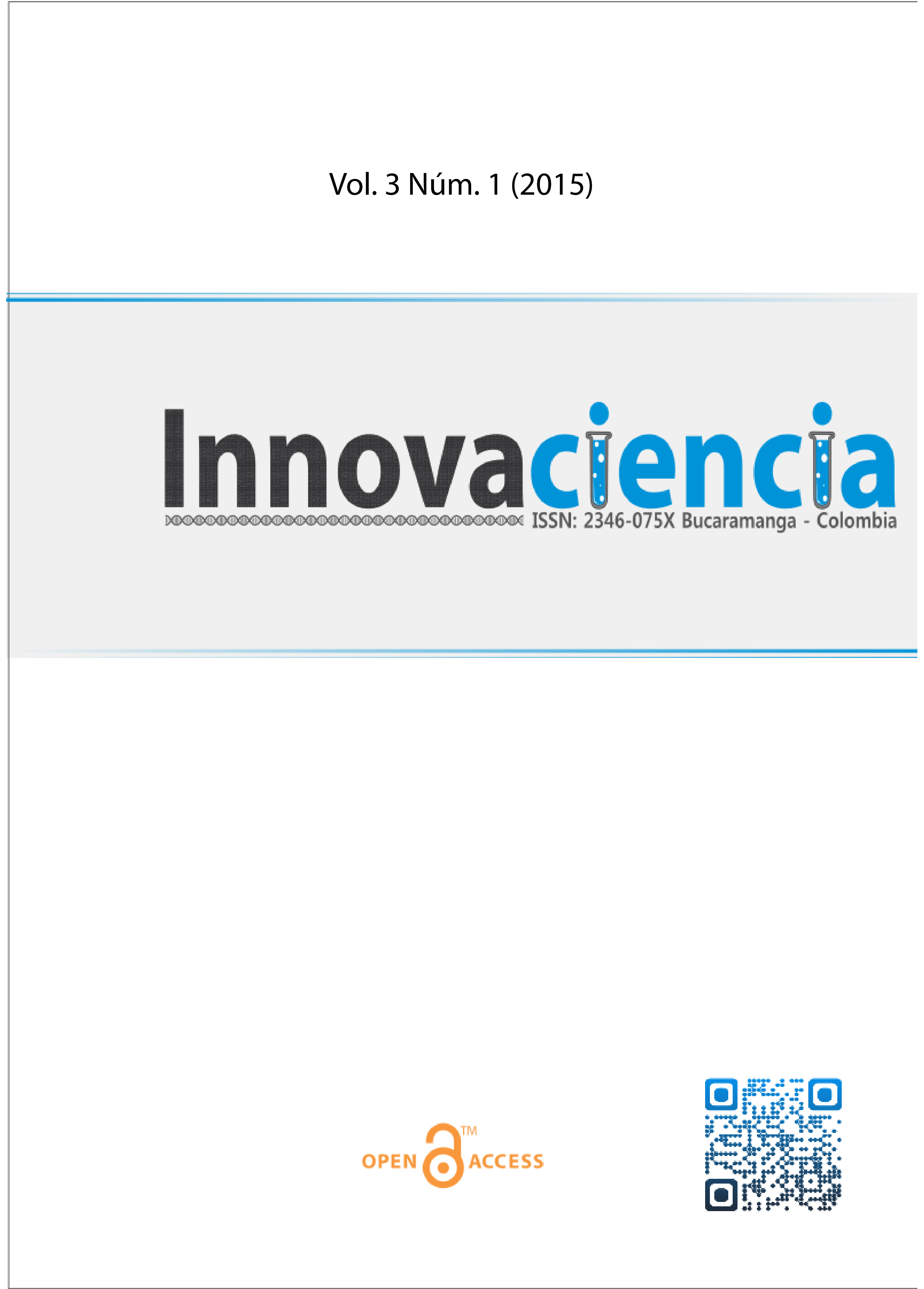A new mutation at exon 2 of hprt1 locus causing lesch-nyhan syndrome.
DOI:
https://doi.org/10.15649/2346075X.362Palabras clave:
Lesch-Nyhan, HGPRT deficiency, genetic counseling, X-linked recessive, mutationResumen
Introduction: Lesch-Nyhan síndrome (LNS) is an X-linked recessive inborn error of metabolism, due to deficiency of the enzyme Hypoxanthine-guanine-phosphoribosyl transferase (HGPRT; EC.2.4.2.8) resulting in hyperuricemia, neurological and behavioural disturbances. In the present work, we report the results of the study of a Colombian family, where LNS was previously clinically and biochemically diagnosed. Material and Methods: The full HPRT gene, including 9 exons and 8 introns, was amplified on eight separate DNA fragments. Both strands, forward and reverse, of the amplified DNA fragments were analyzed and the obtained sequences were compared with those deposited at National Center for Biotechnology Information. Results and conclusions: Sequence analysis allowed the detection of new LNS causing mutation, an adenine deletion in exon 2 of HPRT1 gene resulting in a frameshift which determines a premature stop codon. This study, besides adding a new mutation to the already large spectrum of disease causing variation at HPRT, allows therefore providing genetic counseling for the family as well as prenatal diagnosis.
Referencias
Jinnah HA, Friedmann T. Lesch-Nyhan disease and its variants in: Scriver CR, Beaudet AL, WS, Sly D,Valle. The Metabolic & molecular bases of inherited disease. 8th ed. New York: McGraw-Hill, 2001;(4):2543.
Fu F, Jinnah HA. Genotype-Phenotype correlations in Lesch-Nyhan disease moving beyond the gene. J. Biol. Chem. 2012; 287(5):2997-3008.
Sampat R, Fu R, Larovere L, Torres RJ, Ceballos-Picot I, Fischbach M et al. Mechanisms for phenotypic variation in Lesch Nyhan disease and its variants Hum Genet. 2011; 129(1):71-8.
Argos P, Hanei M, Wilson JM, Kelley WN. The National Center for Biotechnology Information (NCBI)Nucleotide [database on internet] En: M26434. Reports Human hypoxanthin...[gi:184369] Available from: www.ncbi.nlm.nih.gov/Genbank, 2001.
Barrera LA, Rodríguez F, Gómez A, Echeverry O, Escudero E. Aspectos clínicos y bioquímicos del síndrome de Lesch-Nyhan. Acta méd. colomb. 1992;17(6):447-52.
Rodríguez F, Barrera A. Actividad de la enzima HGPRT en Eritrocitos de una familia afectada por el síndrome de Lesch Nyhan. Salud UIS. 2001; 33:32-5.
Gil A, Castillo A, Rodríguez F, Amorim A, Gusmão L.Linkage between HPRTB STR alleles and LeschNyhansyndrome inside a family: Implications in forensic casework. Forensic Sci. Int Genet. 2013;7:e5-e6.
Miller SA, Dykes DD, Polesky HFRN. A simple salting out procedure for extracting DNA from human nucleated cells, Nucl. Ac. Res.1988; 16(3):1215.
Gomes I, Prinz M, Pereira R, Meyers C, Mikasovich RS, Amorim A, et al. Genetic analysis of three US population groups using a X-Chromosomal STR decaplex, Int. J. Legal Med. 2007; 121(3):198-203.
Pico A, Castillo A, Vargas C, Amorim A, Gusmão L. Genetic profile characterization and segregation analysis of 10 X-STRs in a sample from Santander,Colombia. Int. J. Legal Med. 2008; 122(4):347-51.
Torres RJ, Mateos FA, Molano J, Gathoff BS, O’Neill JP, Gundel RM, Trombley L, Puig JG. Mutations in the Hypoxanthine-Guanine Phosphoribosyltransferase Gene in Spanish HPRT Deficient Families. In Purine and Pyrimidine Metabolism in Man X, Adv.Exp. Med Biol. 2002; 11-4.
Edwards A, Voss H, Rice P, Civitello A, Stegemann J, Schwager C, Zimmermann J, Erfle H, Caskey CT, Ansorge WE, et al. Automated DNA Sequencing of the Human HPRT locus. Genomics.1990;6(4):593-608.
Jinnah HA, Harris JC, Nyhan WL, O’Neill JP. Department of Neurology, Johns Hopkins Hospital, Baltimore, Maryland 21287, USA. The spectrum of mutations causing deficiency: an update Nucleosides Nucleotides. Nucleic Acids. 2004; 23(8-9):1153-60.
Fu R, Ceballos-Picot I, Torres RJ, Larovere LE, Yamada Y, Nguyen KV, Hegde M, Visser JE, Schretlen DJ, Nyhan WL, Puig JG, O’Neill PJ, Jinnah HA.For the Lesch-Nyhan Disease International Study Group. Genotype-phenotype correlations in neurogenetics: Lesch-Nyhan disease as a model disorder. Brain. 2014; 137(5):1282-1303.
Descargas
Publicado
Cómo citar
Descargas
Número
Sección
Licencia
Todos los artículos publicados en esta revista científica están protegidos por los derechos de autor. Los autores retienen los derechos de autor y conceden a la revista el derecho de primera publicación con el trabajo simultáneamente licenciado bajo una Licencia Creative Commons Atribución-NoComercial 4.0 Internacional (CC BY-NC 4.0) que permite compartir el trabajo con reconocimiento de autoría y sin fines comerciales.
Los lectores pueden copiar y distribuir el material de este número de la revista para fines no comerciales en cualquier medio, siempre que se cite el trabajo original y se den crédito a los autores y a la revista.
Cualquier uso comercial del material de esta revista está estrictamente prohibido sin el permiso por escrito del titular de los derechos de autor.
Para obtener más información sobre los derechos de autor de la revista y las políticas de acceso abierto, por favor visite nuestro sitio web.
















